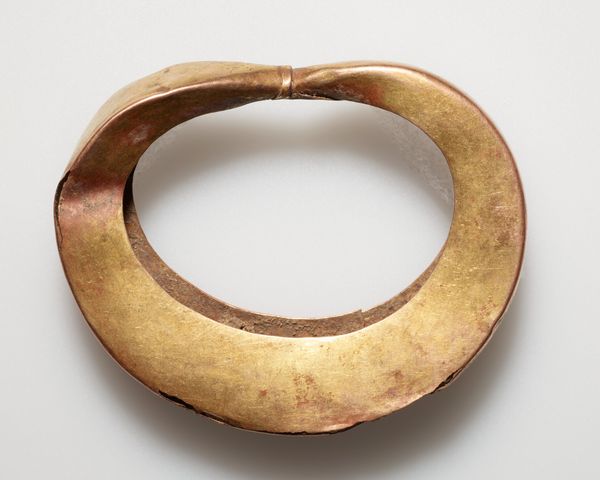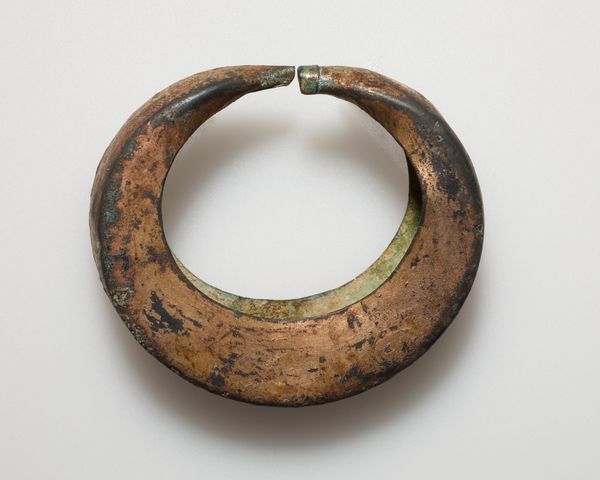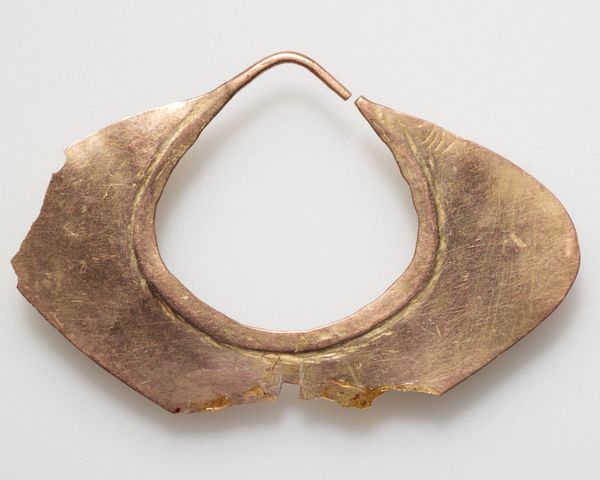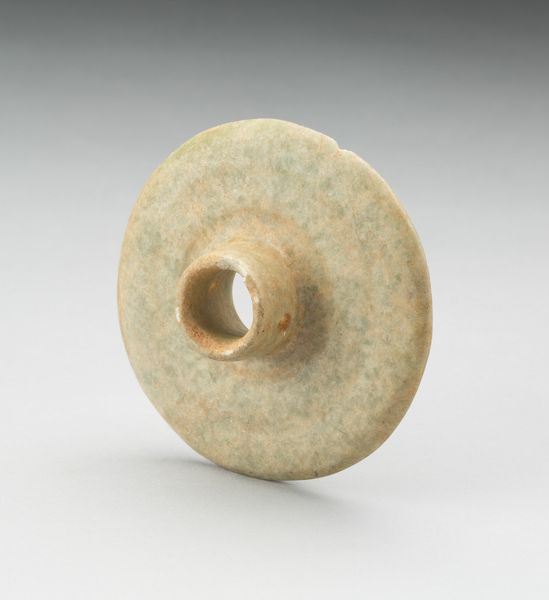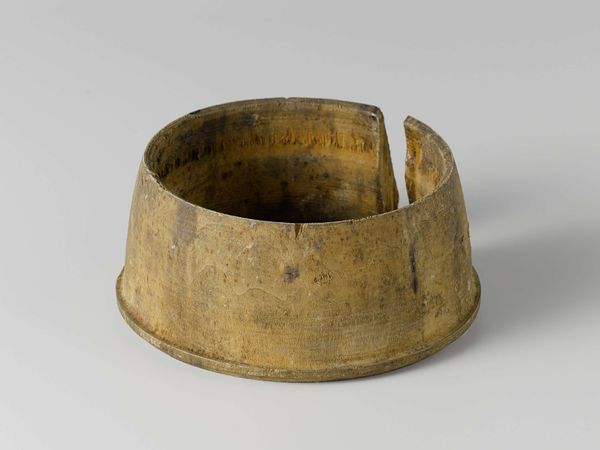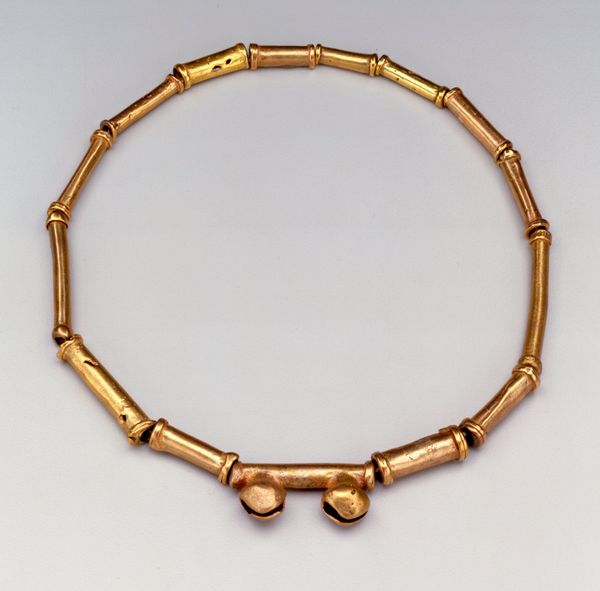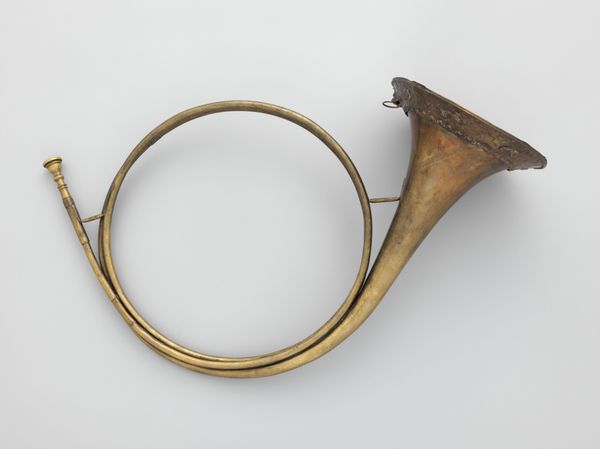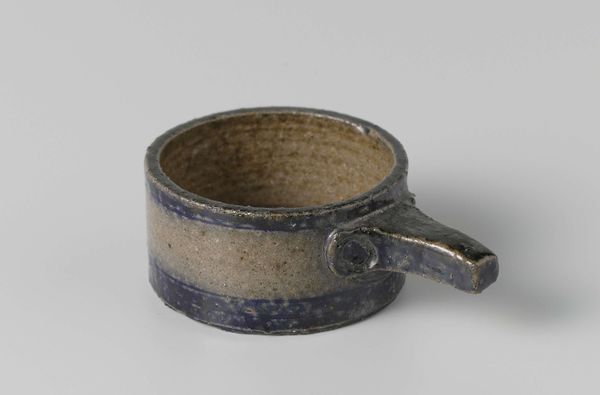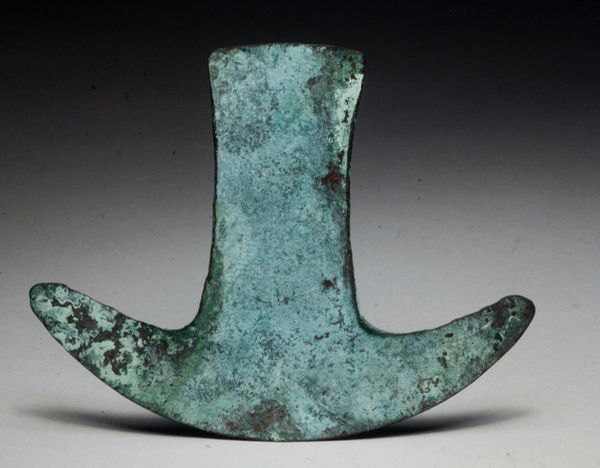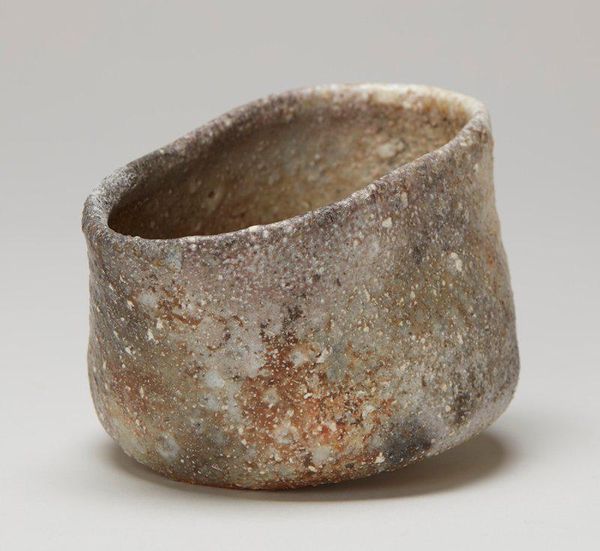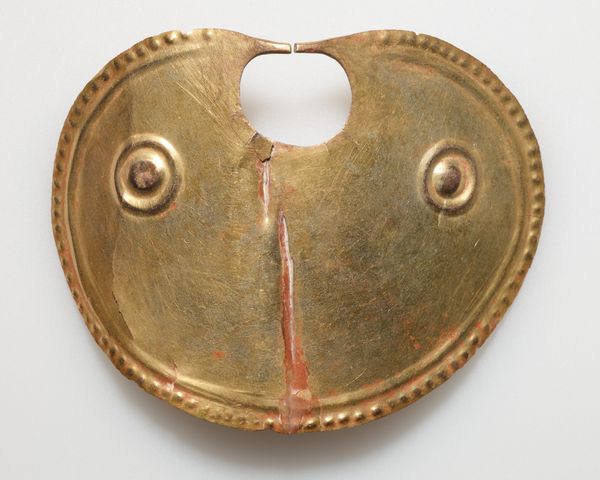
metal, gold
#
metal
#
sculpture
#
gold
#
indigenous-americas
Dimensions: 2 x 2 1/2 x 3/4 in. (5.08 x 6.35 x 1.91 cm)
Copyright: Public Domain
Editor: Here we have a Tairona "Earring" crafted from gold, dating back to the 11th-16th century. It's currently housed in the Minneapolis Institute of Art. The patina is striking! What can you tell me about it? Curator: Focus first on its form. The almost perfect semi-circular shape of the "Earring", or rather, the labret, dominates the piece. Consider how the interior edge curves elegantly, creating a continuous line that emphasizes the circular void within. What is the affect of the rounded geometry, can we compare it to others in the archeological record? Editor: It feels quite heavy but the hollow space communicates both preciousness and austerity. How did the Tairona achieve that shape and is the patina indicative of its age? Curator: Observe the textures, running from the smooth burnished areas to the matte patination. The metallic surface seems to vibrate as these areas recede and protrude from one another. Think, too, of the methods by which the Tairona may have constructed this item - lost wax casting seems likely. Its circularity evokes unity and cyclical continuity central to Tairona cosmological views, as are the effects of age which suggest deep ancestral connections. What do the binary relations, matte/burnished, presence/absence, exterior/interior, suggest to you about our experience with form? Editor: That it can change our perceptions through different focal planes that force the observer to move through space in relation to the artifact. Curator: Indeed! Such works call to question our habitual perception by heightening sensitivity to detail. In looking closely we begin to realize how structure and arrangement of materials shape both perception and meaning. Editor: So true! It's all about the eye and where it falls!
Comments
No comments
Be the first to comment and join the conversation on the ultimate creative platform.
